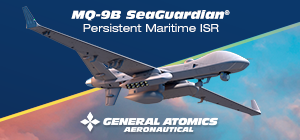.png)
According to a Wall Street Journal report dated Thursday, October 30, the Trump Administration “has identified targets in Venezuela that include military facilities used for drug smuggling.”
The report states that President Donald Trump has not yet made a final decision regarding potential strikes on land targets within Venezuelan territory, but anonymous officials told the paper that “a possible air campaign would focus on targets located at the intersection between drug-trafficking networks and the Maduro regime.”
Potential targets under consideration “include ports and airfields controlled by the military and allegedly used for drug trafficking, including naval facilities and runways, according to one of the officials,” the report adds. Trump, however, categorically denied being in the process of evaluating strikes against Venezuela, telling reporters aboard Air Force One that he has not yet made a decision and does not currently consider military action against the country.
Nevertheless, the US Navy continues to strengthen its presence in the Caribbean: approximately 10,000 American troops are now stationed in the region, most of them deployed to bases in Puerto Rico — Roosevelt Roads, Fort Buchanan, and Muñiz Air National Guard Base. The Ticonderoga-class guided missile cruiser USS GETTYSBURG is currently operating in the area, joining a force that includes 1 Ticonderoga-class cruiser, 3 Arleigh Burke-class destroyers, the IWO JIMA Amphibious Ready Group (ARG) — composed of the namesake LHD and 2 San Antonio-class LPDs, with its embarked 22nd Marine Expeditionary Unit (MEU) — and one Los Angeles-class nuclear-powered attack submarine (SSN).
In addition, as previously reported, the USS GERALD R. FORD Carrier Strike Group — consisting of the aircraft carrier itself and the Arleigh Burke-class guided missile destroyers USS MAHAN, USS WINSTON S. CHURCHILL, and USS BAINBRIDGE — is being redeployed from the Mediterranean toward the Caribbean. The group was sighted yesterday in the vicinity of Gibraltar and is not expected to reach the Caribbean before another week, likely between November 12 and 17.
The news of the GETTYSBURG’s deployment to the Caribbean coincided with a Miami Herald report on Friday, October 31, stating that “US strikes against targets inside Venezuela could occur at any moment.” The newspaper added that “the targets also aim to decapitate the cartel’s hierarchy,” though it remains unclear whether this would involve the elimination of President Maduro.
The Venezuelan leader was indicted by a federal court in New York in 2020, during Trump’s first presidency. He and 14 others — including several close allies — were charged with narco-terrorism and conspiracy with Colombia’s insurgent group FARC (Revolutionary Armed Forces of Colombia) to export cocaine. A $50 million bounty remains in effect for his capture.
In this context, in an interview with a Bloomberg podcast, Venezuelan opposition leader and Nobel Peace Prize laureate María Corina Machado indirectly admitted to supporting potential US strikes against Venezuela, acknowledging that the true goal of such operations — contrary to official statements about “countering drug trafficking” — would be the overthrow of Nicolás Maduro’s government.
As the world awaits to see if and when the United States might launch an attack, US Navy vessels appear to be edging closer to Venezuelan shores. Satellite imagery shows the amphibious assault ship USS IWO JIMA (WASP-class) and an unidentified ARLEIGH BURKE-class destroyer closing to within 200 km of La Orchila, one of Venezuela’s peripheral islands located just over 100 km from the mainland coast.
In this setting, the US Southern Command (SOUTHCOM) announced on Saturday, November 1, that US Marines recently conducted military exercises in Puerto Rico, including amphibious landings and infiltration maneuvers. SOUTHCOM posted a video on its X account showing the 22nd Marine Expeditionary Unit engaged in “training operations in Puerto Rico.” The footage depicts an LCAC hovercraft landing under the cover of UH-1Y helicopters (see frame), while AH-1Z VIPER attack helicopters provided air support as the Marines advanced inland.
According to SOUTHCOM, US forces are deployed in the region to support Pentagon-directed operations and President Trump’s priorities aimed at “disrupting illegal drug trafficking and protecting the homeland.” The Marines were observed maneuvering POLARIS MRZR light tactical vehicles, securing firing positions and conducting infiltration drills. These exercises highlight the expanding US military footprint in the Caribbean, fueling fears of an imminent strike against Venezuela.
Amid rising tensions — marked by increased hostilities (since early September, the US has conducted at least 15 strikes on alleged drug-smuggling vessels, killing 64 individuals) and mutual accusations between Washington and Caracas that have heightened regional alarm — there has also been a notable surge in US aerial activity.
Alongside the USS GERALD R. FORD, which can carry more than 75 combat aircraft (including 3 F/A-18E/F SUPER HORNET squadrons, 1 EA-18G GROWLER electronic warfare squadron, E-2 HAWKEYE airborne command-and-control aircraft, and SH-60 SEAHAWK helicopters), the Pentagon has deployed 10 F-35s and at least 3 MQ-9 REAPER drones to Puerto Rico. The MQ-9s were sighted in September at Rafael Hernández International Airport, while in early October, MH-6 Little Bird and MH-60M Black Hawk helicopters were observed conducting training operations off the coast of Trinidad and Tobago — roughly 50 km from Venezuelan waters. These maneuvers, reportedly executed by the 160th Special Operations Aviation Regiment (SOAR), suggest potential special forces raid preparation.
On October 15, AC-130J GHOSTRIDER gunships and MQ-9 Reapers armed with HELLFIRE missiles were photographed, while Marine F-35s were shown carrying air-to-air missiles in images released by the US military. By late October, B-1 Lancer supersonic bombers had flown missions from Dyess AFB (Texas) and Grand Forks (North Dakota) along Venezuela’s coastline. Concurrently, dozens of C-17 cargo flights were logged in the region, transporting supplies and equipment to Puerto Rico.
Throughout October, at least a dozen surveillance flights were conducted by P-8A Poseidon maritime patrol aircraft from NAS Jacksonville, Florida, over the Caribbean. All this unfolds as Trump recently confirmed that he had secretly authorized the CIA to conduct covert operations in Venezuela, intensifying Washington’s campaign against Maduro.
Meanwhile, recent satellite imagery shows US military preparations underway at commercial airports and Caribbean airbases. Construction work has expanded taxiways and logistical areas at the former Roosevelt Roads Naval Base in Puerto Rico — closed by the Navy in 2004 but now reopened — including more than a dozen tents likely intended for troop accommodation. Additional photos reveal new infrastructure at Henry E. Rohlsen Airport on St. Croix in the US Virgin Islands, featuring runway extensions and a temporary site hosting a US Air Force AN/TPS-75 air-surveillance radar, located roughly 800 km north of Venezuela.








.png)
